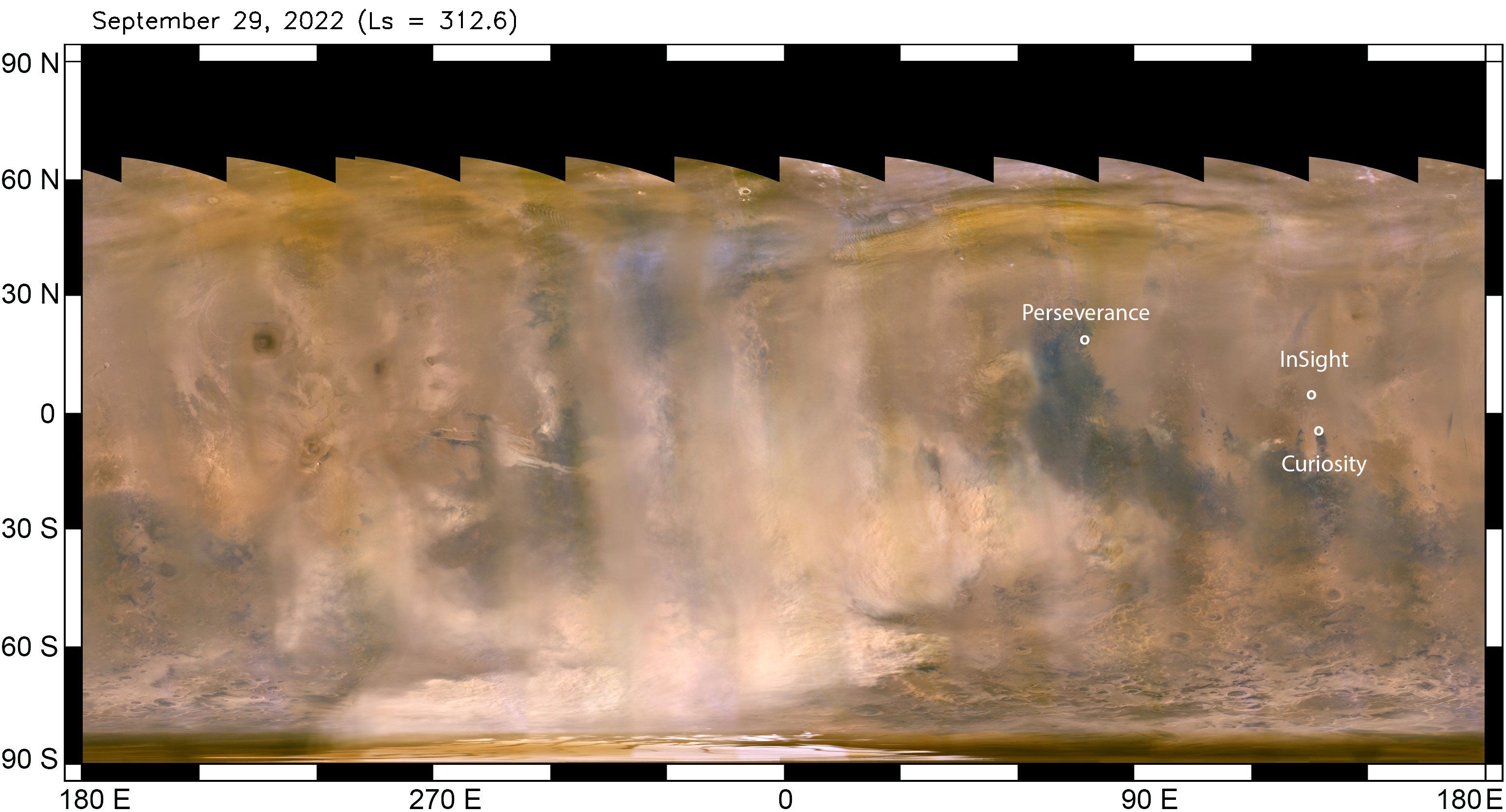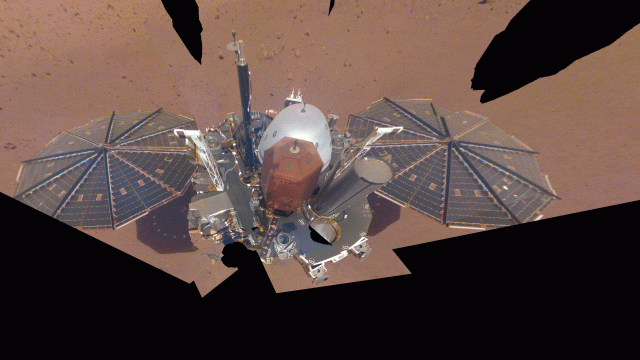The InSight mission on Mars is currently waiting out a continent-size dust storm that has caused the lander’s power levels to drop.
InSight landed on Mars in November 2018 and has since been taking seismological data that has keyed scientists into the planet’s internal structure. The intrepid lander has detected over 1,300 Marsquakes (including the largest quakes ever detected on another planet) and taken its fair share of images of the Martian surface.
But since it landed, InSight has been struggling with dust buildup on its solar panels, which are the lander’s only source of power. The dust — kicked up and laid down by storms like the one currently bearing down on InSight — reduces the amount of power the lander can draw from the Sun.
For lack of a duster aboard the lander, the InSight team tried some creative ways of dislodging the dust. They even attempted pouring more dirt onto the panels, in an attempt to dislodge the thinner film of dust choking out the light. Unfortunately, these stopgap measures merely delayed what is now accepted as inevitable: InSight will run out of power.
In June, NASA announced that InSight likely wouldn’t make it to the end of the year. The agency has taken steps to prolong the lander’s life: All but one of InSight’s instruments are no longer operating, reducing the strain on the lander’s batteries.
The sole instrument still operating is the lander’s seismometer, the instrument that has been fundamental to InSight’s, well, insights during its tenure on the Red Planet.
But in a gambit to prolong the mission, the InSight team turned off the fault protection system, which allows the lander to enter safe modes during hazardous periods. With the fault protection system off, InSight is exposed to the cold fronts and dust storms that can be (and have proven) fatal to machinery on Mars.

“The goal is to get scientific data all the way to the point where InSight can’t operate at all, rather than conserve energy and operate the lander with no science benefit,” said Chuck Scott, InSight’s project manager at NASA’s Jet Propulsion Laboratory, in a NASA release at the time.
On October 3, the impending storm was intense enough to kick up dust that increased the haze of the atmosphere by 40%, reducing the amount of energy InSight was getting from 425 watt-hours per sol to 275 watt-hours per sol.
According to a recent release, InSight will be out of power if the situation persists for several weeks. Scott said that while this storm may not be the lander’s death knell, the next storm will be a real worry.
NASA’s official time frame for the rover’s probable death extends from late October through January 2023. InSight’s most recent public power level updates are posted here.
Whenever the lander does expire, it will be remembered for how much it revealed about the geology of Mars, the planet most similar to Earth in our solar system.
More: New Map of Mars Shows Where It Was Once Covered in Water
